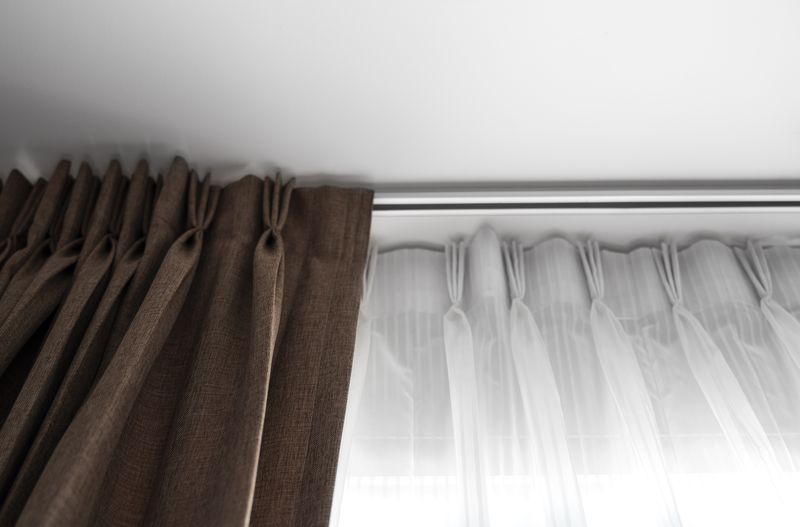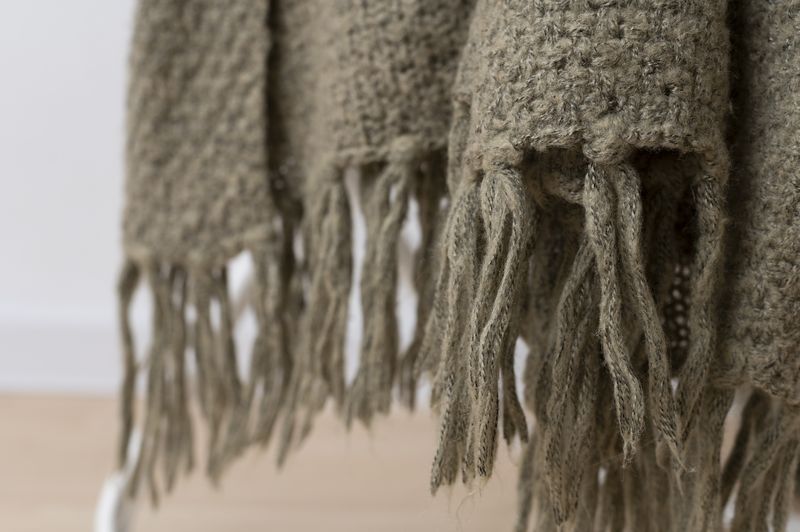Introduction
Window treatments are more than decorative elements, they frame your view, provide privacy, and can significantly impact your room's aesthetic and ambiance.
Choosing the best fabric for curtains is crucial, as it affects the look, feel, and functionality of your room. With the vast number of fabric options available, picking the perfect one can be an overwhelming task. That's the reason this article was created.
We'll explore the top 11 curtains and drapery fabrics, help you choose the perfect material, discuss the pros and cons, and answer the question, "What fabric do I need?".
Camera! Light! Action!
Understanding Curtain Fabrics
The fabric you choose for your window treatments can transform your space, affecting light levels, privacy, and even energy efficiency. Factors such as durability, care, and style should guide your decision to ensure your windows are both beautiful and practical.
Let's take a look at each of the options to see which one is best for you:
1. Cotton Fabric
Cotton curtains are the most popular choice for a variety of window treatments. Cotton fabric stands out for its versatility, durability, and ease of maintenance, providing a clarity perfect for creating a casual or minimalist look. Moreover, this solution presupposes a wide range of colors and patterns, allowing for endless designs.

Benefits:
- Versatile
- Durable
- Easy maintenance
Considerations:
- Must-line for added weight and light control
2. Linen Fabric
Linen curtains have a natural and airy texture that adds an element of sophistication to any room. Its light-filtering properties make it a great choice for drapes, providing privacy and allowing soft, diffused light to penetrate. Anyway, keep in mind that linen is a very soft material, and linen curtains need special care to prevent wrinkles and creases.

Benefits:
- Natural elegance
- Light-filtering
Considerations:
- Prone to creasing
- Hard to clean, may need professional cleaning
3. Silk Fabric
For a touch of luxury and opulence, silk fabric is the go-to material. Its smooth texture and natural sheen add a touch of elegance to your drapes and curtains. Silk curtains are perfect for formal settings and elevating rooms.
However, be aware that powder and water will not be enough to maintain their beauty, such materials need professional cleaning.
Note: We've covered the basics of silk. It's important to remember that there are many types of silk fabric, such as dupioni silk fabric, silk organza fabric, silk taffeta, raw silk fabric, mulberry silk fabric, silk chiffon fabric, and many others. Each of them has different ways of care, you can learn more about them on our silk fabric page.

Benefits:
- Luxurious feel
- Elegant sheen
Considerations:
- As linen, silk requires delicate and professional cleaning
4. Velvet Fabric
Dense piles, rich appearances, and unrivaled levels of warmth are what velvet curtains are all about. Providing excellent insulation and light-proofing, velvet is the perfect choice for bedrooms and home theaters. It's important to keep in mind that velvet is a very heavy material, and you need to prepare in advance if you want to use it.

Benefits:
- Rich texture
- Excellent insulation
Considerations:
- Heavy and must-strong fittings
5. Polyester Fabric
Polyester fabric is a durable, affordable, and easy-to-maintain option for window treatments. It's wrinkle and fade resistant, making it a practical choice for everyday use. The only downside is that polyester is completely non-breathable, so using polyester curtains requires periodic airing out of the room to provide fresh air.

Benefits:
- Affordable
- Durable
- Easy to care
Considerations:
- Non-breathable
6. Voile Fabric
Voile fabric is a lightweight and sheer solution that offers a delicate, airy feel to your window treatments. It's perfect for layering with heavier fabrics like velvet or blackout. Usually, voile curtains are used during daylight hours in spaces that need to maximize natural light and don't necessarily offer a high level of privacy.

Benefits:
- Sheer
- Maximizes natural light
Considerations:
- Due to the transparent texture, it provides minimal privacy and isolation
7. Blackout Fabric
Blackout fabrics are specially designed to block out light, providing complete darkness in a room. They are ideal for bedrooms, children's rooms, and home theaters where light control is very important. Keep in mind that blackout curtain fabric, due to its properties, is really heavy and must be fastened to special fixtures of the highest quality.

Benefits:
- Blocks out light
- Provides increased privacy
Considerations:
- Requires reinforced fasteners due to their heavy weight
8. Wool Fabric
Wool curtains are like a warm hug on a cold day. Their coziness and heat retention properties make them a great option for places with cold climates or for people who just love warmth. In any case, it is important to remember that woolen fabric requires strict and proper care in order not to lose its properties.
Otherwise, it may settle, become less pleasant to the touch, and look completely different from the moment of purchase.

Benefits:
- Warm and cozy
- Keeps the cold out
Considerations:
- Might feel itchy to some
- Needs to be washed carefully to avoid shrinking
9. Damask fabric
Damask fabric is known for its elaborate designs and fancy look, making it perfect for sophisticated window decorations. Its unique reversible patterns come from a special weaving technique, adding a unique style.
Damask curtains vary in thickness, making it suitable for both light accents and thick curtains. However, the intricate details mean it might cost more and be harder to keep up.

Benefits:
- Unusual designs
- Elevates a space with elegance and sophistication
- Comes in various weights to suit different needs
Considerations:
- The intricate weaving may lead to a higher price
- Requires meticulous care to maintain the elaborate patterns
10. Nylon Fabric
Nylon fabric is durable and stretchy, which means that nylon curtains will last a long time, even if you use them often. It's great for high-traffic areas because it can withstand a lot of wear and tear while being easy to maintain.
Once again, synthetics have their own characteristics. The main one for sure, is breathability. In hot and sunny places, nylon curtains don't breathe at all but retain heat, which makes the temperature in the room noticeably hotter.

Benefits:
- Very strong and lasts a long time
- Can bend and stretch without breaking
Considerations:
- Might not do well in hot or sunny spots due to its breathability
11. Rayon Fabric
Rayon fabrics are the perfect solution for adding elegance, softness, and versatility without the hassle. This material feels similar to silk but is cheaper and much easier to care for. That's why they are ideal for high-traffic areas where you want to add a touch of elegance.
Remember that rayon, just like silk, requires proper care to prevent creasing and fading.
Benefits:
- Has a silky feel
- Can be used in many different ways
Considerations:
- Might get wrinkled easily
- Needs to be cleaned gently
Comparison Table: Simplifying Your Choice
Are you among those people who struggle to choose the perfect fabric for your curtains and blinds? Well, we've got you covered! Here is a comparison table, highlighting features like durability, maintenance, light filtration and aesthetic appeal that will help you decide which fabric is right for you.
|
Fabric Type |
Durability |
Maintenance |
Light Filtration |
Aesthetic Appeal |
|
Cotton |
Medium |
Easy |
Medium-High |
Casual to Formal |
|
Linen |
High |
Moderate |
High |
Casual Elegance |
|
Silk |
Low |
High |
Low |
Luxurious |
|
Wool |
High |
High |
Low |
Cozy, Rich |
|
Polyester |
High |
Easy |
Medium |
Versatile |
|
Acrylic |
Medium |
Easy |
Medium |
Casual |
|
Nylon |
High |
Easy |
Medium |
Functional |
|
Rayon |
Medium |
Moderate |
Medium-High |
Elegant |
|
Poly-Cotton |
High |
Easy |
Medium |
Everyday Elegance |
|
Linen-Viscose |
Medium |
Moderate |
High |
Relaxed Refinement |
Conclusion
For the perfect fabric selection in your window treatments, it's all about a balance of function and style. Whether you are drawn to the natural beauty of linen or silk or simply value the durability and convenience of polyester and nylon, there really is something for every need and taste. Understand what your space calls for, whether light and privacy control or ease of maintenance, and let style guide the way to the perfect solutions for your windows.
On top of all this, be sure to consider some important factors such as functionality, style, maintenance, and budget. Now, with this guide in hand, you'll be able to choose the perfect window treatment fabric and give a tasteful look to your space.
Bottom line
We at fabricmill.com offer a wide selection of fabric for draperies, as well as catalogs with designed curtains, sheers, valances, and drapery hardware. Explore our extensive collection of high-quality fabrics to inspire your next project. Turn your windows into stunning focal points that reflect your unique style and the beauty of your living space.







